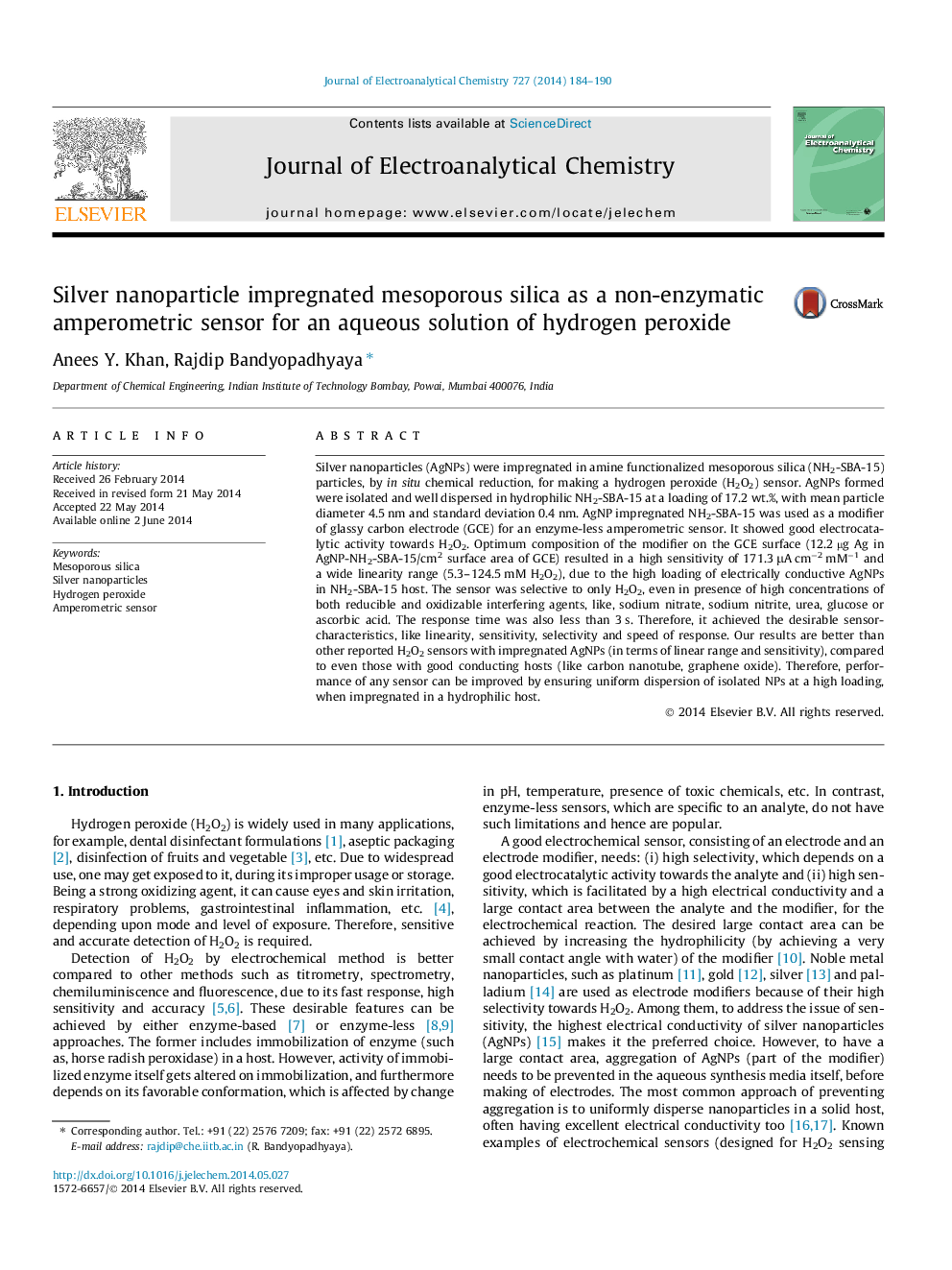| کد مقاله | کد نشریه | سال انتشار | مقاله انگلیسی | نسخه تمام متن |
|---|---|---|---|---|
| 218763 | 463217 | 2014 | 7 صفحه PDF | دانلود رایگان |
• Isolated and well dispersed AgNPs in NH2-SBA-15 used for H2O2 sensing.
• High linearity and sensitivity than many other reported nanoparticle based sensors.
• Sensor selective to only H2O2 even in presence of interfering species.
• Well dispersed NPs at high loading in hydrophilic host is key for better sensor.
Silver nanoparticles (AgNPs) were impregnated in amine functionalized mesoporous silica (NH2-SBA-15) particles, by in situ chemical reduction, for making a hydrogen peroxide (H2O2) sensor. AgNPs formed were isolated and well dispersed in hydrophilic NH2-SBA-15 at a loading of 17.2 wt.%, with mean particle diameter 4.5 nm and standard deviation 0.4 nm. AgNP impregnated NH2-SBA-15 was used as a modifier of glassy carbon electrode (GCE) for an enzyme-less amperometric sensor. It showed good electrocatalytic activity towards H2O2. Optimum composition of the modifier on the GCE surface (12.2 µg Ag in AgNP-NH2-SBA-15/cm2 surface area of GCE) resulted in a high sensitivity of 171.3 μA cm−2 mM−1 and a wide linearity range (5.3–124.5 mM H2O2), due to the high loading of electrically conductive AgNPs in NH2-SBA-15 host. The sensor was selective to only H2O2, even in presence of high concentrations of both reducible and oxidizable interfering agents, like, sodium nitrate, sodium nitrite, urea, glucose or ascorbic acid. The response time was also less than 3 s. Therefore, it achieved the desirable sensor-characteristics, like linearity, sensitivity, selectivity and speed of response. Our results are better than other reported H2O2 sensors with impregnated AgNPs (in terms of linear range and sensitivity), compared to even those with good conducting hosts (like carbon nanotube, graphene oxide). Therefore, performance of any sensor can be improved by ensuring uniform dispersion of isolated NPs at a high loading, when impregnated in a hydrophilic host.
Figure optionsDownload as PowerPoint slide
Journal: Journal of Electroanalytical Chemistry - Volume 727, 1 August 2014, Pages 184–190
